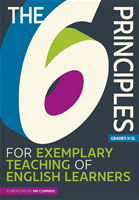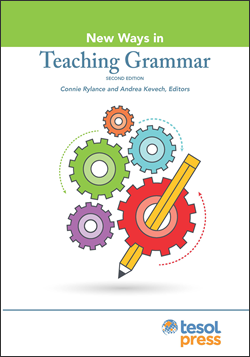10 Resources for Pre-K–5 Educators of ELs
by Judie Haynes
 To kick off the 2018–2019 school year, I have compiled many really good resources that I came across this summer. I’d like to share links to the best of what I’ve read over the past few months.
To kick off the 2018–2019 school year, I have compiled many really good resources that I came across this summer. I’d like to share links to the best of what I’ve read over the past few months.
1. Several Ways to Get the New School Year Off to a Good Start–Part One
This article is from Larry Ferlazzo’s Education Week column, Classroom Q & A. The responses are from classroom teachers and writers in the field of education. This column has an excellent response by Rick Wormeli, the author of One Day and Beyond. Also, there are links in Larry’s article to Part Two and Part Three.
2. Getting it Right: Reference Guide for Registering Students with Non-English Names
We all want our school districts to get our ELs’ names right, but that can be difficult for the school staff that is charged with registering students. This handy guide has examples of naming conventions in 11 languages.
 3. English Learners and ESSA: A Resource Kit
3. English Learners and ESSA: A Resource Kit
This is an extensive report on how new Every Student Succeeds Act (ESSA) regulations affect ELs in school. This mandate started September 2017 and is a must for teachers of ELs to have in their classrooms so that they are familiar with the ESSA regulations for ELs. TESOL has a lot of information on their website.
4. 4 Practical Steps to Help Immigrant Families in your School Community
According to this article on Colorín Colorado, 7% of K–12 students in the United States have at least one undocumented parent. It is imperative for schools to know what their legal obligations are toward these students.
5. How Much Can Schools Protect Undocumented Students?
This is an article from Education Week on what schools can do to protect undocumented students. Schools may have less power to do this than we think. One way that might work is for schools to limit immigration officials’ access to school grounds.
6. Why Immigrant Families May Have Unique Needs Before, During, and After Natural Disasters
This is excellent information from Colorín Colorado about what unique needs immigrant families may have during a natural disaster and what schools can do to help communicate with these families. These needs include communication, preparation for an imminent disaster, and how to evacuate.
7. Refugee
This book by Alan Gratz is a brilliant novel that presents three stories of survival. The book centers on children and their families when they are driven from their home by war and violence. This book is a must read for teachers.
8. 18 Ways to Support Your English Learners
This article has advice from ESL teacher Valentina Gonzalez on strategies for teachers so that they can level the playing field for ELs in content-area learning. I recommend adding Valentina’s blog to your list of articles and books to read so that you can keep up with the field of ESL education.
9. ESL/ELD Resource Group of Ontario
This website allows you to download guided reading books for ELs and includes a lesson plan. The books are practical, everyday topics that help older students navigate the ins and outs of their life. Although some of the books are distinctly for Canadian audiences, there is plenty to download for U.S. teachers.
10. Creating a Welcoming Environment for English Learners in Your School and Classroom
and Five Elements of a Positive Classroom Environment for Students Living With Adversity
This past summer, I coauthored two articles for ASCD Inservice. The first (“Creating a Welcoming Environment”), I coauthored with Debbie Zacarian, and the other (“Five Elements”), I coauthored with Debbie Zacarian and Lourdes Alvarez-Ortiz.
*A version of this article first appeared on the TESOL Blog, 19 September 2018.
Judie Haynes taught elementary ESL for 28 years and is the author and coauthor of eight books for teachers of ELs , the most recent being “Teaching to Strengths: Supporting Students Living with Trauma, Violence and Chronic Stress“ with Debbie Zacarian and Lourdes Alvarez-Ortiz. She was a columnist for the TESOL publication "Essential Teacher" and is also cofounder and comoderator of the Twitter Chat for teachers of English learners #ELLCHAT.
TESOL Blogs
Interested in writing a blog for TESOL?
Read the submission guidelines and send us your post!
Check out some of the most recent TESOL Blogs:
|
10 Resources for Pre-K–5 Educators of ELs, by Judie Haynes
 Hello everyone. I’m happy to come back as a blogger for TESOL specializing in pre-K–5 education for English learners (ELs). To kick off the 2018–2019 school year, I have compiled many really good resources that I came across this summer. I’d like to share links to the best of what I’ve read over the past few months. Read more. Hello everyone. I’m happy to come back as a blogger for TESOL specializing in pre-K–5 education for English learners (ELs). To kick off the 2018–2019 school year, I have compiled many really good resources that I came across this summer. I’d like to share links to the best of what I’ve read over the past few months. Read more.
|
|
The 6 Principles’ Book Club, by Jennifer Lacroix
 One of the biggest challenges for educators is keeping abreast of current research. Empirical studies can inform and improve our practice, but it can be difficult to find time to decipher and stay up-to-date with the literature. One of the biggest challenges for educators is keeping abreast of current research. Empirical studies can inform and improve our practice, but it can be difficult to find time to decipher and stay up-to-date with the literature.
This past summer, as a way of engaging in a culture of shared responsibility for refreshing our evidence-based practices, a few of my colleagues and I formed a book club. Rather than reading a bunch of primary sources, we instead chose to use The 6 Principles for Exemplary Teaching of English Learners by Deborah Short and her TESOL team as a framework for our discussions. Although the authors wrote the book for a K–12 audience, we found the general concepts applicable to our university-based Intensive English Program. Read more. |
|
On Campus and Beyond: From Speaking to Writing, Part 1, by Elena Shvidko
 I have just finished teaching a summer ESL course entitled “Cross-Cultural Talk”—a speaking class that focuses on language fluency at a low-intermediate level of language proficiency. Because I always try to help my students to become more familiar with the campus environment and use resources available on it (as all of them will be “regular” university students soon after they finish their intensive English course), I designed my syllabus around cross-cultural topics that could be explored both on campus and beyond. Read more. I have just finished teaching a summer ESL course entitled “Cross-Cultural Talk”—a speaking class that focuses on language fluency at a low-intermediate level of language proficiency. Because I always try to help my students to become more familiar with the campus environment and use resources available on it (as all of them will be “regular” university students soon after they finish their intensive English course), I designed my syllabus around cross-cultural topics that could be explored both on campus and beyond. Read more.
|
TESOL Bookstore

Featured Resources from TESOL Press
 The 6 Principles for Exemplary Teaching of English Learners
The 6 Principles for Exemplary Teaching of English Learners
With a Foreword by Jim Cummins
TESOL International Association Writing Team
As the number of English learners around the world soars, so does the need for quality English language instruction. TESOL International Association has furthered its ELT leadership role by defining a core set of principles for the exemplary teaching of English learners. The 6 Principles will help you make informed decisions to improve English language instruction and assessment. These foundational principles are for all educators and are applicable across different educational settings. This book features a detailed explanation of The 6 Principles, practical applications for your classroom, ideas for building a strong community of practice, and more!
 New Ways in Teaching Grammar, Second Edition
New Ways in Teaching Grammar, Second Edition
Connie Rylance and Andrea Kevech
Unsure of how to include creativity and project-based learning in grammar lessons? The 2nd edition of this best-selling book includes updated activities and new contributions that cover a wide range of teaching techniques -- from introducing a specific grammar point to providing meaningful, contextualized practice.
 More Than A Native Speaker: An Introduction to Teaching English Abroad, Third Edition
More Than A Native Speaker: An Introduction to Teaching English Abroad, Third Edition
Don Snow and Maxi-Ann Campbell
In this newly updated third edition, learn step-by-step how to effectively teach English abroad. Gain valuable tips and resources for teaching in an unfamiliar educational system, working with students of varying ages and skill levels, and adapting to life in a different culture. A rich array of online resources and activities included.